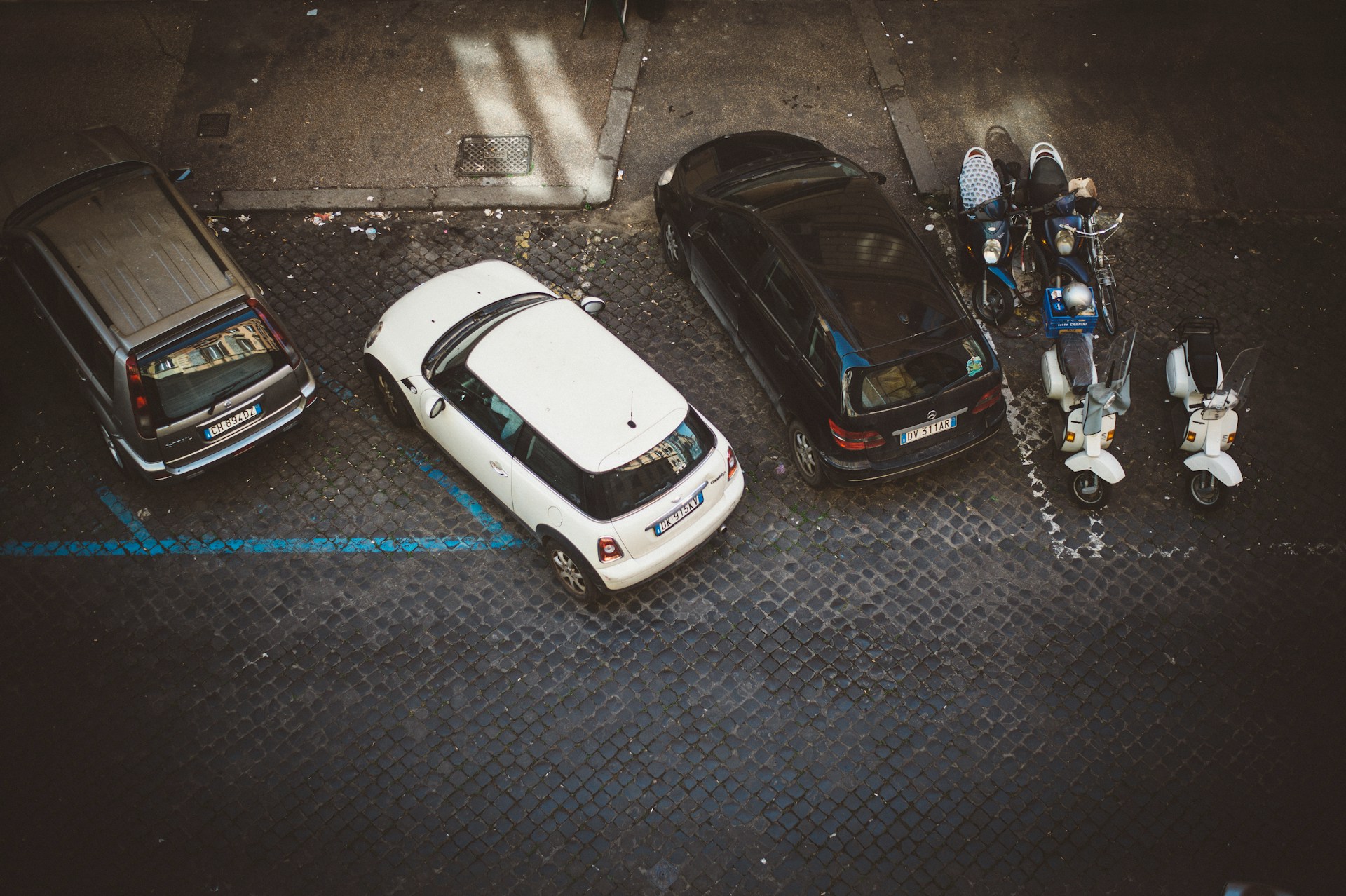When contemplating a sojourn in Italy, the allure of traversing the Salento countryside at your own pace is undeniable. Or perhaps it’s a more practical matter of daycare dropoffs and IKEA runs. Regardless, the prospect of owning a car raises a crucial question: Do you need residency to purchase a car in Italy? Let’s untangle the web of Italian car ownership requirements.
Yes, if you want to keep it for longer than a year
To buy a car in Italy, you generally need to have “resident” status. However, exceptions do exist for those needing a car for less than a year (keep reading) But for normal circumstances, here’s the basic checklist for procuring a used Italian-registered car:
- Proof of Residency: EU citizens must provide proof of residency or domacile while non-EU citizens require a “Permesso di Soggiorno” at at least a receipt. (stay permit).
- Italian ID or Proof of Identity: You’ll need an Italian ID card or an equivalent document.
- Codice Fiscale: Italy’s equivalent of a tax ID, which is essential.
- Proof of Insurance Necessary for your safety and legal compliance.
After acquiring your car, you must complete a “Passaggio di Proprietà,” the transfer of ownership, within 60 days. This process takes place at the “Agenzia di Pratiche Automobilistiche,” often handled by dealers when buying from them.
Italian Citizens NOT living in Italy
Italian citizens residing outside Italy and registered with the Aire (Anagrafe degli Italiani Residenti all’Estero – Registry of Italians Residing Abroad) face limitations when registering a car in Italy. They can only do so if they can establish a legal domicile (residence) within the country at the time of registration. This means their Italian domicile address will appear alongside their Aire registration on both the registration certificate and ownership certificate of the car.
EU Citizen NOT living in Italy
EU citizens residing outside Italy can also own and register a vehicle in the Public Motor Registry, but under similar conditions. They must demonstrate either property ownership, business relations, or legitimate interests within Italy. Additionally, they are required to designate a legal domicile in Italy during the registration process. This chosen domicile address will be reflected on both the car’s registration and ownership certificates.
Non-EU Citizens & Non Resident : Salvini Decree and EE Plates
Italy’s journey towards car ownership often takes intriguing detours, including the recent Salvini Decree on Safety, which has introduced significant changes to the circulation of vehicles with foreign license plates in the country. Additionally, non-EU citizens who are not residents in Italy have a unique avenue for vehicle registration through EE plates. Let’s delve into these two important aspects of car ownership in Italy.
The Salvini Decree: Safety and Vehicle Circulation
The Salvini Decree, aptly named for its focus on safety, introduces restrictions on the circulation of vehicles with foreign license plates on Italian territory. Under Article 132 of the Codice della Strada (C.d.S), this decree outlines specific rules for vehicles registered abroad wishing to traverse Italian roads.
The key provisions of the Salvini Decree are as follows:
- One-Year Circulation Limit: Vehicles registered abroad are allowed to circulate in Italy for a maximum of one year.
- Expiration Deadline: Once this one-year period elapses, if the vehicle remains unregistered in Italy, the owner can approach the competent motoring office to obtain a warrant to leave the national territory.
- Consequences of Overstaying: Should the vehicle continue to circulate in Italy beyond the stipulated one-year limit, the penalty increases. Additionally, the vehicle is subject to seizure, and unless it undergoes the process of nationalization or export, it can be confiscated within 180 days.
The Salvini Decree aims to regulate the presence of foreign-registered vehicles on Italian roads, emphasizing the importance of timely registration and compliance with the established time limits.
EE Plates: A Solution for Non-Resident Non-EU Citizens
Non-EU citizens who are not residents of Italy often face unique challenges when it comes to car ownership. In such cases, individuals in possession of an entry visa for Italy have a distinct option to purchase and utilize a vehicle. This solution involves registering the vehicle with an EE plate, valid for one year.
The EE plate serves as a temporary but practical solution for non-resident non-EU citizens. This type of registration allows individuals to acquire and operate a car for a specified period, aligning with their visa status. By registering the vehicle with an EE plate, non-resident non-EU citizens can ensure legal compliance while enjoying the benefits of mobility during their stay in Italy.
It’s important to note that the EE plate provides a time-limited window for vehicle use, and owners should be attentive to the expiration date. Once the one-year validity of the EE plate comes to an end, it is advisable to explore alternative registration options or ensure compliance with the country’s legal requirements to continue using the vehicle within Italian territory.
Transfer of Vehicle Ownership in Italy
For the transfer of ownership of a second-hand car, ensure you have the following documents:
- Atto di Vendita (Act of Sale): Essential for a legal transaction.
- Certificato di Proprietà (Vehicle Documents): Proof of ownership.
- Carta di Circolazione (Registration Certificate): Vital for the vehicle’s legal operation.
- Proof of Residency: EU citizens require this, non-EU citizens need a “Permesso di Soggiorno.”
Until the transfer of ownership is complete, the original owner remains responsible for taxes, accidents, and traffic offenses. To verify the transfer’s completion, refer to the “Pubblico Registro Automobilistico” (PRA), accessible by contacting the “Automobile Club D’Italia” (ACI) and providing your license plate details.
Registering the new owner involves several components:
- Spese Motorizzazione: A fixed cost.
- Spese Pubblico Registro: Cost depends on the car’s horsepower.
- Valori Bollati: Another fixed cost.
The total expense can range from a few hundred to several thousand euros, depending on the car’s specifications.
Italian Vehicle Tax
Italy mandates car tax payments, irrespective of the vehicle’s usage. The amount varies based on the car’s type, fuel, and emissions. Payment can be made at your local “Automobile Club D’Italia” (ACI) office or online, and surprisingly, at various locations like bars, tabaccherias, banks, and post offices. For this payment, you’ll need the “Libretto” (logbook), your ID card, and “Codice Fiscale.”
Mandatory Car inspections in Italy
In Italy, all cars aged over four years require a “Revisione,” the Italian counterpart to the US’s DMV, to be conducted every two years. This inspection is performed at your local “Centro Revisioni Auto” and should be recorded in your “Libretto” to avoid fines due to an expired “Revisione.”
Types of Italian Car Insurance
In case of breakdowns, Italy’s “Automobile Club D’Italia” (ACI) comes to the rescue when you dial 116. Italian car insurance differs from some other countries, as it insures the car itself rather than the driver. Forget about “no claims bonuses” here.
Here are the main insurance options:
- Kasco: The closest to comprehensive coverage.
- Responsabilità Civile: Third-party coverage.
- Incendio-Furto: Protects against fire and theft.
- Infortuni dei Conducente: Covers the driver in accidents caused by their fault.
- Servizio Assistenza: Provides roadside assistance.
Upon purchasing insurance, you’ll receive an insurance disc to be prominently displayed on your car’s windshield.
Document checklist for your vehicle
When driving in Italy, it’s essential to carry all required documents, including your ID, driving license, Bollo receipt (proof of car tax payment), insurance disc, “Libretto” (with proof of “Revisione” if needed), and the mandatory bright yellow luminous jackets for breakdowns. Your driver’s license, identification card, and Libretto should all display your current address. Failure to do so may result in a fine. In certain regions, it is mandatory to have snow chains on hand during the winter season, and road signs will inform you when this is necessary
Quick note on driver’s licenses in Italy
In Italy, individuals can operate mopeds from the age of 14 and cars from the age of 18. The Italian driver’s license is initially valid for 10 years, but this period changes as you age. Up to the age of 50, it remains valid for 10 years. After reaching the age of 50, it must be renewed every five years. Once you reach the age of 70, the renewal frequency increases to every three years.
European Union (EU) citizens residing in Italy can continue to use their newly issued EU driving licenses both in Italy and their country of issuance. However, EU citizens with older driving licenses must either authenticate them within twelve months or convert them to an Italian license.
Non-EU citizens living in Italy, including those from the United States, Canada, and Australia, are required to take a driving test and acquire an Italian driver’s license within 12 months. This is because Italy lacks a reciprocal agreement with these countries.
Driving without a valid license may result in significant fines or could void your car insurance coverage in the event of an accident.
Over to you
Italy’s diverse and captivating landscapes await exploration, and owning a car can unlock an unparalleled adventure. While residency requirements might seem like a hurdle, there are ways to navigate the system, allowing you to experience Italy on your terms. Remember to embrace local customs and regulations, and soon enough, you’ll be savoring Puglia’s breathtaking beaches and culinary treasures from behind the wheel of your very own Italian car. Bon voyage!




